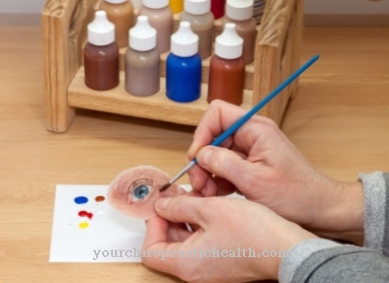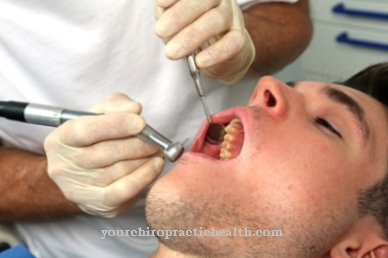At a cotton swab it is a stick wrapped with cotton wool at both ends. Both the cotton wool and the sticks can be made of different materials. Today the cotton swab is mainly used in cosmetics and personal care, but is also used in many other areas.
What is a cotton swab?

A cotton swab is a seven centimeter long swab that is wrapped with cotton at both ends. The chopsticks are usually made of plastic or paper. Wood is used less often. The wadding is often made of cotton and, in some cases, plastic.
In 1926, the US American Leo Gerstenzang, who came from Poland, developed cotton swabs for cleaning babies' ears. As far as we know today, the cotton swab is not unconditionally suitable for cleaning ears. Today they are mainly used in cosmetics and beauty care. One area of application is, among other things, the application of eye shadow.
They have been sold under the brand name Q-tips since the early years. The Q stands for "quality" and "tips" for top or bottom. Thus, in the English-speaking area and beyond, the name Q-tips has become commonplace for cotton swabs.
Shapes, types & types
Cotton swabs have a simple structure. These are seven centimeter long sticks made of plastic, paper or wood, wrapped at both ends with plastic or cotton wool.
For the medical sector, cotton swabs are sometimes handmade. Chopsticks made of steel with a roughened tip are used here. The tips are then wrapped with cotton by hand. The possibility of using different sized cotton pads is an advantage here.
Cotton swabs are also used in so-called smear sets in criminology to determine the genetic fingerprint when examining DNA. There they are used to take smears on surfaces or to take saliva samples. Mostly sticks made of plastic or aluminum and cotton wool made of viscose fibers are used here. The wadding is soaked in a carrier liquid, a gel or a combination of gel and activated charcoal. The cotton wool is only wrapped at one end of the stick.
Structure & functionality
Today, cotton swabs are only used to a limited extent for the original purpose for which they were originally intended. Leo Gertenzang actually developed it in the 1920s to clean the ears. The chopsticks should be used especially for baby ears. Today, however, a warning is given on the packs of Q-tips against this application, because they do not remove the ear wax, but on the contrary, push it deeper into the ears if used carelessly.
As a result, the cotton swabs have not lost their importance. New areas of application have been opened up, some of which support new, promising technologies. Their use in criminology for DNA testing has increased their importance. Swabs can be taken from biological samples using cotton swabs soaked in liquids or gels. The DNA-containing samples are extracted in the laboratory and subjected to a genetic examination.
Today, Q-tips are mainly used in households for beauty care. Their use has proven itself when applying eyeshadow. They are also suitable for external care and offer effective cleaning. For example, the ears can also be cleaned externally without having to insert them into the ear canal. The recesses of the auricles are cleaned with the cotton swab.
You can find your medication here
➔ Medicines for earache and inflammationMedical & health benefits
There is hardly a household today that lacks cotton swabs. However, their use outside of hospitals no longer has any medical significance. Today they are mainly marketed for cosmetic purposes. The great market success of Q-tips in the past was always due to its use for cleaning the ears. Even today, many users buy cotton swabs precisely for this purpose, although the packaging also states that they are not suitable for this.
For external care, baby care and beauty care, Q-tips are still very popular care products today. However, they should not be used to clean the ear canal, because they will push the wax deeper into the ear and possibly clog it. A plug can form, which in turn serves as a settlement area for bacteria. There is therefore the possibility of protracted ear diseases.
Apart from that, ear cleaning is usually not necessary, as the ear wax itself does the cleaning. It picks up pathogens and moves on its own towards the exit of the ear. There it only has to be removed by washing. Of course, the cotton swab can also be used as a swab if it is not inserted further into the ear canal.
Areas on the body surface that are difficult to access can often be easily reached and cleaned with the cotton swab. In addition to the cosmetic application, their field of application has now also expanded to the cleaning of technical devices. Here, too, the aim is to better reach areas that are difficult to access.

























.jpg)


